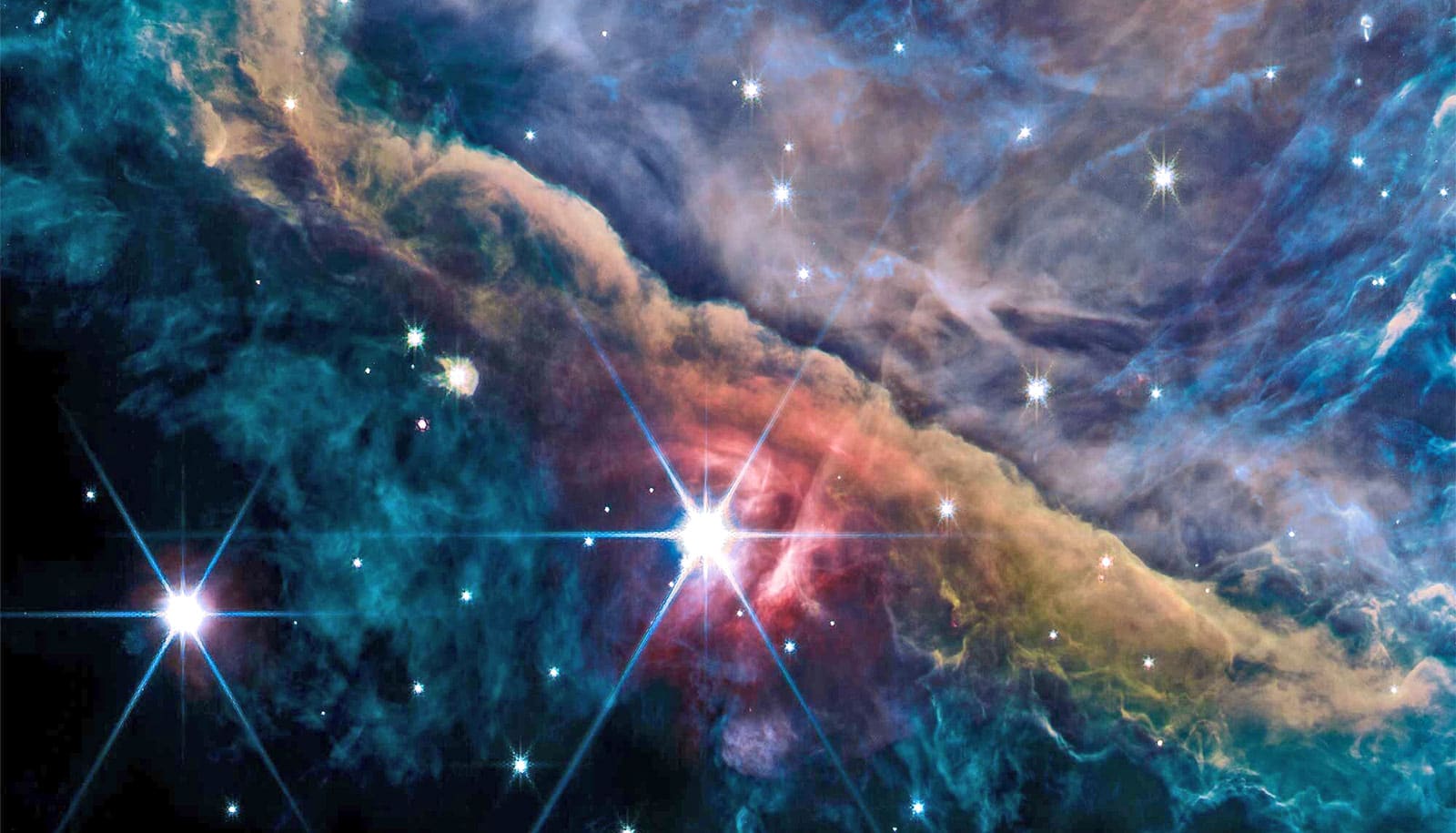New research suggests that chemistry in late-stage planet development is fueled by ultraviolet rays, rather than cosmic rays or X-rays.
The chemistry of planet formation has fascinated researchers for decades because the chemical reservoir in protoplanetary discs—the dust and gas from which planets form—directly affects planet composition and potential for life.
The new finding provides a chemical signature that helps researchers trace exoplanets back to their cosmic nurseries in the planet-forming disks.
Jenny Calahan, a doctoral student in astronomy at the University of Michigan and first author of the paper in Nature Astronomy, says the discovery was part happy accident, part building on previous work.
“It has been shown that there are bright, complex organic molecules present in the coldest and densest parts of planet-forming disks,” Calahan says. “This bright emission has been puzzling because we expect these molecules to be frozen out at these temperatures, not in the gas where we can observe them.”
These molecules are emitting from regions that are minus-400 degrees Fahrenheit, and at these temperatures they’re thought to be frozen onto tiny solids that astronomers label as dust grains, or for the later millimeter-to-centimeter-sized solids as pebbles. These molecules should add to an icy coating on the grains, so they cannot be observed in the gas.
The planet-forming disk has three main components, a pebble-rich dusty midplane, a gas atmosphere, and a small dust population coupled to the gas. As the planet-forming disk evolves over time, the changing environment affects the chemistry within. To account for the observed brightness, Calahan adjusted her model to decrease the mass of the small dust population—which typically blocks UV photons—to allow more UV photons to penetrate deep into these coldest regions of the disc. This reproduced the observed brightness.
“If we have a carbon-rich environment paired with a UV-rich environment due to the evolution of the small solids in planet forming regions, we can produce complex organics in the gas and reproduce these observations,” she says.
This represents the evolution of small dust over time.
About 20 years ago, researchers realized that the chemistry of the gaseous disk is governed by chemistry operating on shorter timescales and powered by sources such as cosmic rays and X-rays, says principal investigator Edwin Bergin, professor and chair of astronomy.
“Our new work suggests that what really matters is the ultraviolet radiation field generated by the star accreting matter from the disk,” he says. “The initial steps in making planets, forming larger and larger solids, shifts the chemistry from cosmic rays and X-ray-driven early, to UV-driven during the phase where giant planets are thought to be born.
“Jenny’s work tells us for terrestrial worlds, if you wonder how they get things like water, the key part of the evolution is the early phases before this shift occurs. That is when the volatile molecules that comprise life—carbon, hydrogen, nitrogen—are implanted in solids that make Earth-like worlds. These planets are not born in this phase but rather the composition of solids becomes fixed. The later stages of this model tells us how to determine the composition of material that makes giant planets.”
Source: University of Michigan



